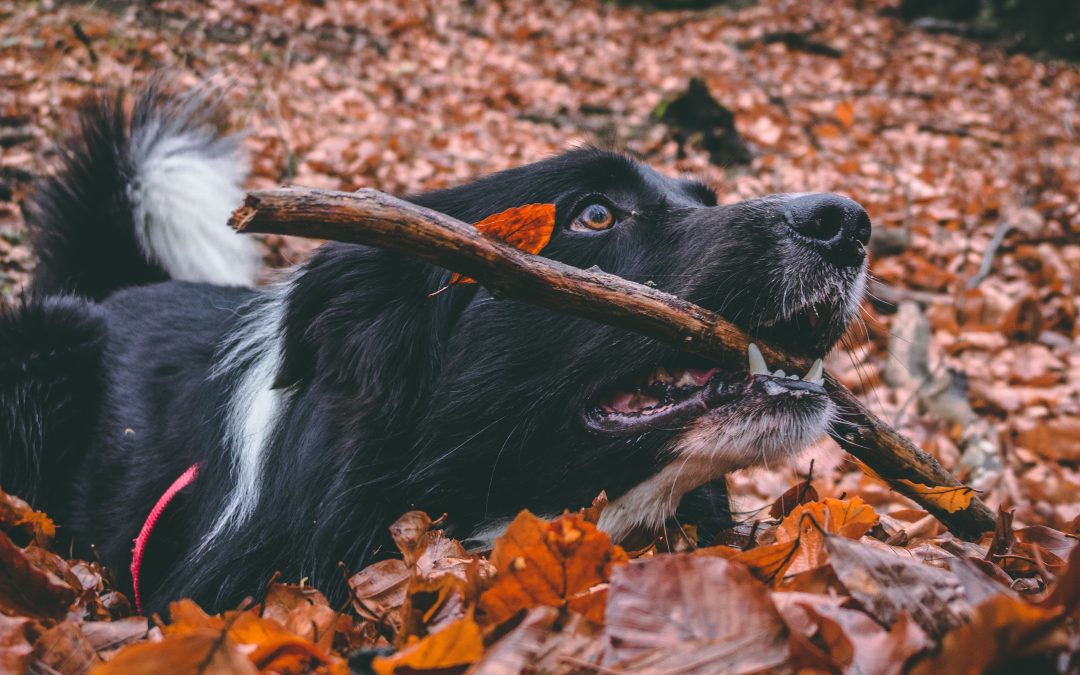I won’t address seasonal allergies, arthritis pain, or the like—there are plenty of veterinary and holistic articles out there covering these.
What I’d like to consider is the vacuum left in our dog’s social and emotional life by the change in season. During the summer, our dogs had their people around for walks, games of fetch or hide and seek, belly rubs, or just plain companionship. If they are well-behaved, they accompanied us on vacations and had the opportunity to smell new smells, explore new environments with their family, run far, splash in the water, live a dog’s best life.

With the end of summer, however, comes the sudden disappearance of younger children who are now spending their days at school, their afternoons at sports practice, and their evenings busy doing homework. Dogs also feel the absence of older children who are off to college, or perhaps have chosen this time of year to move out and begin their own independent lives.
The adults in the household, who may have worked shorter hours or taken time off during the summer, have their noses “back to the grindstone”, in a return to purposeful, productive work, or in an effort to get ahead of the game before the holidays approach. I don’t know about your house, but around here, September is typically a hectic month for all, with appointments to be made, forms to be filled out, books and supplies to be purchased, house and yard chores to catch up on.
It’s very easy to move the family dog down the list of priorities, especially when the dog isn’t a “problem”. In many cases, her world shrinks to the house and back yard, for weeks at a time.
In these ways, a change in the people’s schedules sometimes results in a big downgrading of the dog’s quality of life.
I’m not here to add to the guilt pile…truly! We all get more than enough of that.
I would like to offer a few suggestions for how we might lessen the negative impact of lifestyle changes on our beloved dogs.
- Commit to quality time: It doesn’t have to be hours, but quality matters. If the time you have together is a 20 minute walk, put away your phone, spend that time WITH your dog. He knows the difference, I promise.
- Expand his world: find a way to include your dog in activities you have to do anyway. If it’s allowed, bring him along to the kids’ soccer/field hockey/lacrosse practice to practice sitting quietly, or, if there’s space and it’s appropriate, some training
 or perhaps a game of fetch. Bring her along to run errands, and perhaps make a 15 minute detour for a quick walk in a park or someplace else outside her normal routin
or perhaps a game of fetch. Bring her along to run errands, and perhaps make a 15 minute detour for a quick walk in a park or someplace else outside her normal routin - Break up long hours alone: look into some mentally stimulating games or activities, or consider hiring a dog walker. If you work close to home, or even FROM home, get your dog, take a walk, or work on some training during lunchtime—it’ll do both you and your dog some good to get outside for a break.
- Here’s my favorite suggestion (I know, big surprise!): Train your dog, or use and expand the training you already have. (This one covers all of the above!) In 10-15 minutes at a time, a LOT can be accomplished. Training provides mental stimulation, a sense of purpose, and results in better behavior. It’s time you’re directly connected with your dog, and, once you have some basic skills, working in a variety of areas is part of the task.Train for obedience, tricks, or specific tasks—they’re all good! Come the holidays, your dog can be even more enjoyable to have around, and the envy of all your guests.
- Spread out the responsibility: if every busy two-footed family member can agree to commit 15-20 minutes of their day to the four-footed family member, in some way, his life will continue to be rich and fulfilled. Walks, structured play WITH the dog, training, grooming, or just sharing a sofa: a seasonal shift in schedule doesn’t have to spell a constricted life.


0 Comments